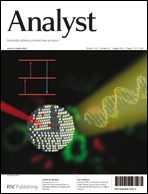A stable and controllable Prussian blue layer electrodeposited on self-assembled monolayers for constructing highly sensitive glucose biosensor
Abstract
A stable and controllable Prussian blue (PB) layer electrodeposited on self-assembled monolayers (SAMs) of


 Please wait while we load your content...
Please wait while we load your content...